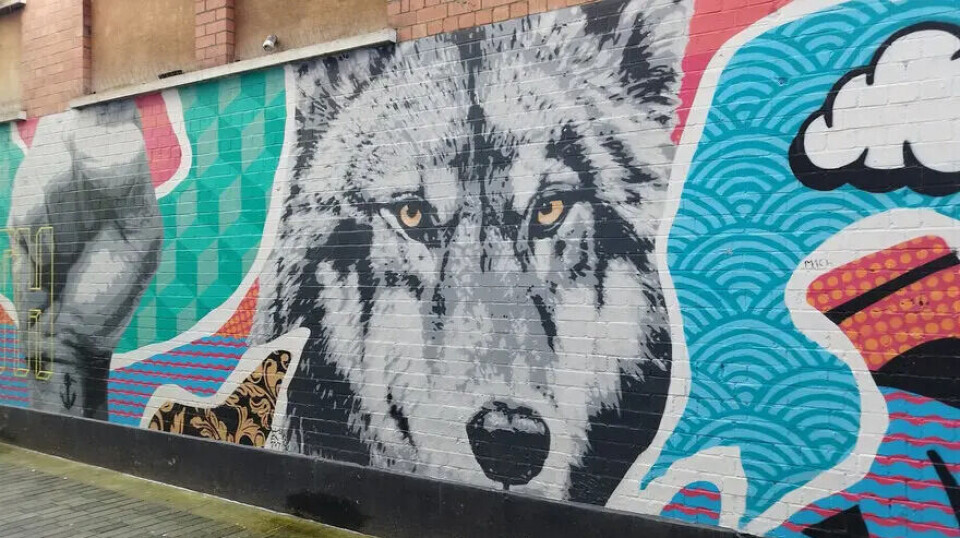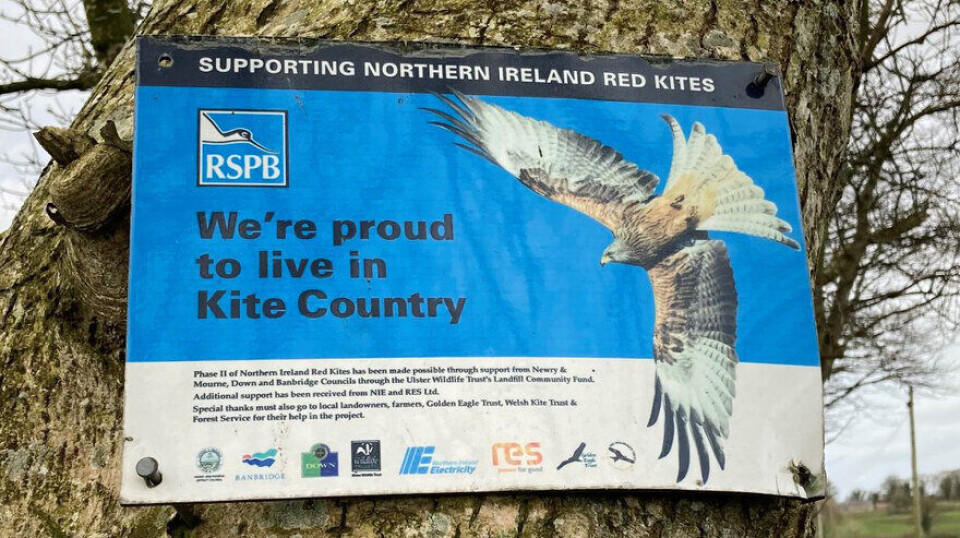THIS CONTENT IS BROUGHT TO YOU BY the Norwegian University of Life Sciences (NMBU) - read more

Can Ireland learn to coexist with wildlife again?
While studying abroad, Dara Sands encountered local wildlife coexisting with humans, sparking the question: Could Ireland reintroduce and live harmoniously with its native species?
In 2015, Irish student Dara Sands was walking along
the lower slopes of Table Mountain in Cape Town where he was studying
conservation biology. A friend pointed out a caracal - a medium-sized wild cat
- and Sands was struck by how unphased the cat was by their presence.
As the cat casually sauntered past, Sands pondered on how unusual such wildlife encounters are in his native Ireland.
He later discovered that the city of Cape Town and the Cape Peninsula are home to a plethora of wildlife including baboons, zebra, sharks, and penguins. Coexistence of humans and wildlife is, he learned, integral to life in Cape Town.
Could this not be the case in Ireland? A seed of curiosity about human-wildlife coexistence was sown.
Rewilding initiatives
In his doctoral research at the Norwegian University of Life Sciences (NMBU), Sands considers the potential for reintroducing wildlife in Ireland through rewilding initiatives:
How can wild animals and humans coexist on the island? What would cause conflict, and how could such conflicts be transformed into coexistence?
“To answer this, I looked at past and present human-wildlife interactions and rewilding projects in Ireland,” Sands says. “I started by researching the history of human-wolf relations in Ireland."
He then explored a current project to reintroduce Red Kites to Northern Ireland.
"With a lessons-learned approach taken from these two studies, I looked at how rewilding might contribute towards transforming approaches to biodiversity conservation in Ireland in the future,” he says.
Wolves in Ireland
Humans and wolves coexisted in Ireland up to the 17th century. After scouring historical sources of wolf-human interactions on the island, Sands reveals how human tolerance of wolves unravelled following Ireland’s integration into an expanding global capitalist system under a colonial regime during the early modern period (c. 1530 – 1786).
In this new socio-economic climate, Ireland was redefined as a primitive ‘wolf-land’. This influenced the introduction of a novel hunting culture, and the subsequent decline in wolves.
The decline was driven by changes in ecosystems as landscapes were transformed through the expansion of a new form of commercialised agriculture, and a profit-driven system of private property by landlords who had little or no experience of living with wolves, nor any desire to. Prior to these changes, people appeared to accept that wolves were part of the world they mutually inhabited.

“In the context of early modern Ireland, the decision to eradicate wolves was made by colonial rulers and administrators who were primarily concerned with the conquest and control of people and non-human nature, rather than coexistence,” Sands says.
He adds that prior ways of living with wild animals were transformed under colonial rule, along with the violent transformation of language, lifestyles, livelihoods, and landscapes.
Sands argues that such historical knowledge is important to broaden our understanding of human-wildlife interactions and for thinking about coexistence.
“The legacies of colonialism and capitalism in driving the decline of wildlife, both in the past and present, and their role in shaping current conservation ideas and practices need to be addressed in order to move forward in our conservation efforts,” he says.
Reintroduction of red kites
Between 2008 and 2010, 80 red kites (Milvus milvus) were released into the skies above rural County Down where Sands grew up. The conservation project was billed as Northern Ireland’s first species reintroduction.

“Spearheaded by the Northern Ireland branch of the Royal Society for the Protection of Birds (RSPB), the project set out to create a self-sustaining red kite population, raise public awareness about conservation issues and encourage the local and wider community to take inspiration from the recovery of the large, charismatic raptors,” Sands describes.
Whilst the project has been proclaimed a success, Sands discovered that the process of planning, implementing, and governing wildlife through such reintroduction projects is far from straight forward.
“A key dimension of rewilding is the simple and alluring idea that nature should be allowed to find its own way with minimal or no human intervention. Yet, this idea can be problematic, particularly in the context of species reintroductions to human-dominated landscapes. It risks omitting humans from the picture and overlooking the social and political dimensions of rewilding,” Sands explains.
The lack of attention to these aspects means that efforts to facilitate coexistence with even relatively uncontroversial species, such as the red kite, can exacerbate existing tensions or provoke new conflicts over land use, environmental governance, wildlife crime, and renewable energy, according to Sands.
He argues that challenges such as these remain largely unaddressed in the context of Northern Ireland’s contested rural landscapes. Until such issues are better addressed and understood, it will be very difficult to make meaningful progress towards coexistence and meeting the current and future needs of people and wildlife.
Is convivial conservation the answer?
Sands examined how conflicts over rewilding could be transformed via convivial conservation. Convivial (i.e. ‘living with’) conservation moves away from a top-down approach where nature is protected and fenced off from humans (sometimes literally) - a losing battle that is becoming more violent as biodiversity and natural resources become scarcer.
Instead, it proposes that nature be allowed to flow more freely, with people being allowed to be part of the same spaces. Some human spaces will become wilder, and some wild spaces will become more human.
Convivial conservation also proposes changes in how conservation is financed, with a basic conservation income for those living in or near biodiverse areas. It advocates that those with the largest environmental footprints must change their livelihoods the most, regardless of how far they live from conservation spaces.
Sands argues that rewilding can learn from convivial conservation’s commitment to shared landscapes – an approach rooted in environmental justice.
“Although wary of adding yet another interpretation to an already overcrowded rewilding lexicon, the notion of convivial rewilding may be fruitful for advancing inclusive and just forms of coexistence. We need to challenge rewilding strategies that are grounded in colonial and capitalist logics. More optimistically, this research aims to show that human-wildlife coexistence is possible - and convivial rewilding could be a key alternative pathway for supporting the pursuit of abundant and equitable futures,” Sands concludes.
Dara Sands will defend his thesis Living with the Wild: Rewilding Conflicts and Conservation Politics in Ireland on Thursday 24 August at Bikubben Auditorium at the Norwegian University of Life Sciences.
More content from NMBU:
-
Shopping centres contribute to better health and quality of life
-
We're eating more cashew nuts – and the consequences are serious
-
Do young people with immigrant parents have better health?
-
Who’s picking your strawberries this summer?
-
Can coffee grounds and eggshells be turned into fuel?
-
Rising housing costs fuel inequality in Norway





































